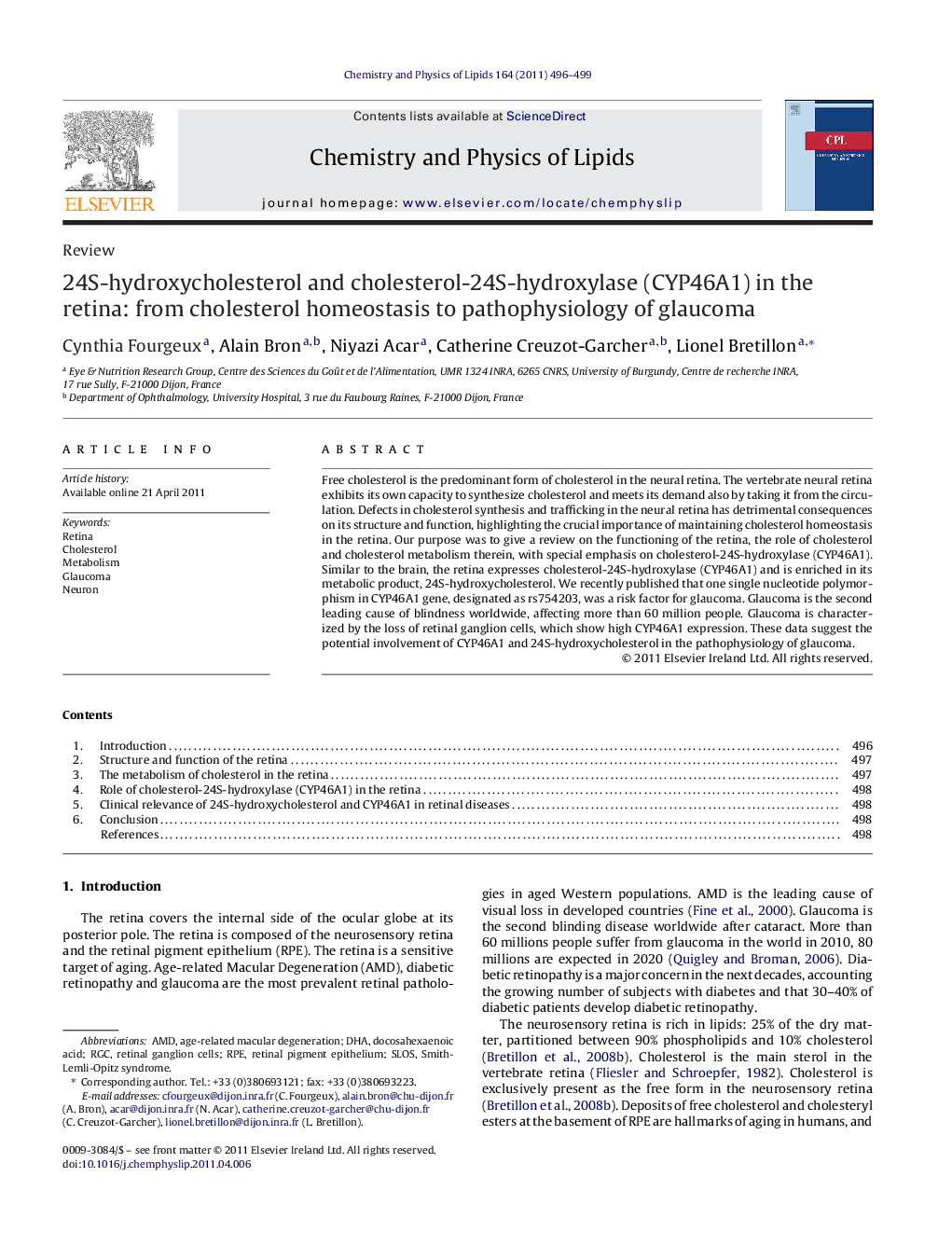| Article ID | Journal | Published Year | Pages | File Type |
|---|---|---|---|---|
| 1253371 | Chemistry and Physics of Lipids | 2011 | 4 Pages |
Free cholesterol is the predominant form of cholesterol in the neural retina. The vertebrate neural retina exhibits its own capacity to synthesize cholesterol and meets its demand also by taking it from the circulation. Defects in cholesterol synthesis and trafficking in the neural retina has detrimental consequences on its structure and function, highlighting the crucial importance of maintaining cholesterol homeostasis in the retina. Our purpose was to give a review on the functioning of the retina, the role of cholesterol and cholesterol metabolism therein, with special emphasis on cholesterol-24S-hydroxylase (CYP46A1). Similar to the brain, the retina expresses cholesterol-24S-hydroxylase (CYP46A1) and is enriched in its metabolic product, 24S-hydroxycholesterol. We recently published that one single nucleotide polymorphism in CYP46A1 gene, designated as rs754203, was a risk factor for glaucoma. Glaucoma is the second leading cause of blindness worldwide, affecting more than 60 million people. Glaucoma is characterized by the loss of retinal ganglion cells, which show high CYP46A1 expression. These data suggest the potential involvement of CYP46A1 and 24S-hydroxycholesterol in the pathophysiology of glaucoma.
► Cholesterol-24S-hydroxylase (CYP46A) is a cholesterol-metabolizing enzyme. ► 24S-hydroxycholesterol is formed by CYP46A1 activity. ► CYP46A1 is specific to neurons, including retinal ganglion cells. ► Polymorphism in cyp46a1 gene is associated with greater risk for glaucoma.
